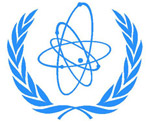 New York Times: The International Atomic Energy Agency last week presented a report to its board that laid out new information on what it calls “possible military dimensions” of Iran’s nuclear program, clarifying the central issue in the long clash between Tehran and the West over nuclear technology.
New York Times: The International Atomic Energy Agency last week presented a report to its board that laid out new information on what it calls “possible military dimensions” of Iran’s nuclear program, clarifying the central issue in the long clash between Tehran and the West over nuclear technology.
The New York Times
By WILLIAM J. BROAD
 The International Atomic Energy Agency last week presented a report to its board that laid out new information on what it calls “possible military dimensions” of Iran’s nuclear program, clarifying the central issue in the long clash between Tehran and the West over nuclear technology.
The International Atomic Energy Agency last week presented a report to its board that laid out new information on what it calls “possible military dimensions” of Iran’s nuclear program, clarifying the central issue in the long clash between Tehran and the West over nuclear technology.
The nine-page report raised questions about whether Iran has sought to investigate seven different kinds of technology ranging from atomic triggers and detonators to uranium fuel. Together, the technologies could make a type of atom bomb known as an implosion device, which is what senior staff members of the I.A.E.A. have warned that Iran is able to build.
Weapons based on implosion are considered advanced models compared with the bomb that the United States dropped on Hiroshima. In these devices, the detonation of a sphere of conventional explosives creates a blast wave that compresses a central ball of bomb fuel into a supercritical mass, starting the chain reaction that ends in a nuclear explosion.
Implosion designs, compact and efficient by nature, are considered necessary for making nuclear warheads small and powerful enough to fit atop a missile.
Iran has dismissed charges that it is pursuing such technologies as lies based on fabricated documents or real ones taken out of context. It insists that its atomic program is meant exclusively for such peaceful objectives as producing medical isotopes and electric power. The result has been a tense standoff.
Last week’s report said the director general of the I.A.E.A., Yukiya Amano, recently wrote to Iranian officials to reiterate the agency’s concerns about the arms evidence and request “prompt access” to a wide range of Iranian facilities and individuals.
The report said Mr. Amano “urges Iran to respond positively” in order to establish “the exclusively peaceful nature” of its program.
Official doubts about Tehran’s ambitions emerged publicly in 2002 and have resulted in four rounds of United Nations sanctions. To date, the penalties have failed to stop Iran from enriching uranium, which can fuel both reactors and atom bombs.
In 2009, senior staff members of the I.A.E.A. concluded in a confidential analysis that “Iran has sufficient information to be able to design and produce a workable implosion nuclear device” based on highly enriched uranium.
The new report includes some of the technical evidence behind that charge. It describes the sources of the information as “many member states” as well as its own efforts. Nuclear experts assume that much intelligence comes from Israel, the United States and Western Europe, though the I.A.E.A. in total has 151 member states.
The report cites concerns about undisclosed nuclear activities “past or current,” implying that the agency believes the Iranian arms program may still be moving ahead despite reports of its onetime suspension.
The seven categories of technology all bear on what can be interpreted as warhead design: how to turn uranium into bomb fuel, make conventional explosives that can trigger a nuclear blast, generate neutrons to spur a chain reaction and design nose cones for missiles.
Two diplomats familiar with the evidence, both of whom spoke on the condition of anonymity under the usual protocol, emphasized that no single one of the technologies stood out as indicating bomb work. Some, they conceded, have peaceful uses.
But the totality of the evidence, they said, suggested that Iran has worked hard on multiple fronts to advance the design of nuclear arms.
“It’s the whole variety of information,” one of the diplomats said. “You have to look at the whole thing.”


